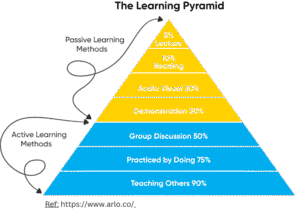
“Just sit down and focus.”
That’s what most parents end up saying, or thinking, when their child drifts off during homework, forgets simple instructions, or stares at the wall mid-task.
But here’s the hard truth:
Focus isn’t something kids are born with — it’s something they learn. And they can only learn it in an environment where they feel safe, understood, and supported.
Before we start looking for productivity hacks or discipline strategies, let’s look deeper.
Is It Really a Focus Issue, or Something Deeper?
When kids “can’t focus,” they’re not always being defiant or lazy. Sometimes, they’re overwhelmed. Sometimes, they’re confused. Sometimes, they just don’t feel emotionally anchored.
Here are a few things that might actually be going on:
1. They Don’t Understand the Task
If a child doesn’t grasp the basic concept — in math, reading, or anything else — they’ll zone out. It’s easier to avoid than to fail.
Ask them:
“Can you show me what part is confusing?”
“If we slowed it down, where should we start?”
2. They Don’t Feel Capable
What looks like “disinterest” is often just a lack of confidence. Kids can’t be interested in something they don’t understand — and they won’t focus on something they think they’ll fail at.
3. They’re Under Silent Pressure
Middle schoolers and high schoolers, especially, are dealing with more than just schoolwork. Friendships shift, academic pressure builds, and home expectations often rise without warning.
What they need to hear:
“It’s okay to not be perfect.”
“I care more about your effort than your result.”
“You can always ask for help — you don’t have to do this alone.”
4. They’re Using Screens as Escape
It’s not just about addiction or dopamine. Often, kids turn to screens because they’re lacking structure, support, or attention in real life. This doesn’t mean you should ban the screen — it means you may need to re-enter the picture. Sit beside them. Be the quiet presence. Show them you’re in it with them.
5. They Don’t Feel Emotionally Safe at Home
Yes, home is where they should feel free. But when home becomes just another source of pressure — especially about grades, behavior, or expectations — kids lose focus because they feel misunderstood.
A gentle prompt:
“Did something feel hard today that you didn’t want to talk about?”
“Did I make you feel like results matter more than effort?”
“Are you feeling seen here — or just managed?”
Limit Direction to One or Two at a Time
1. Too Many Classes, Not Enough Practice
When kids are enrolled in too many classes or activities, their schedules fill up quickly — but that doesn’t always mean they’re learning more. Without enough time to review or practice, new skills don’t stick. Sometimes, fewer classes with more practice time work better.
2. Break Down Instructions at Home (For younger ones)
Just like with classes, too many directions at once can feel overwhelming. Instead of saying, “Get your book, find a pencil, sit at the table, and start on page 12,” break it into smaller steps. One or two directions at a time make it easier for kids to follow along and stay focused.
For Middle & High Schoolers: The Pressure Is Real
The jump from elementary to middle or high school is a major emotional shift. Teachers get stricter. Friendships get messier. Expectations get higher. And often, without realizing it, parents start focusing more on performance.But here’s what many teens actually need:
- Less pressure to perform
- More praise for effort
- Permission to ask for help
- A safe space to be imperfect
Start saying this often:
“I care more about how hard you try than what you score.”
“It’s okay to not have it all figured out.”
“You’re allowed to need help.”
When you remove fear and replace it with curiosity, support, and trust, focus follows.
How You Can Help Without Nagging
You don’t need to be an expert. You just need to stay connected. Try these simple, realistic strategies:
1. Break the Task
Instead of: “Finish your homework,”
Say: “Let’s dive into today’s homework. It’s been a while since I did this. Can you walk me through it?” (Improvise according to the situation)
2. Work Alongside Them
Your presence matters more than you think. Sit beside them and say,
“I’m going to do my work while you do yours. Let’s both focus for 10 minutes.”
3. Ask Better Questions
Swap “Did you finish your work?” for:
“Do you need some help with your homework?”
- “If you had to guess, how long does your homework usually take you, like one episode of a show, or a whole movie?”
- “What part of your homework takes the longest, and what part feels easy?”
“What was the most interesting (or weirdest) part of your homework today?”
“If you could make homework easier or more fun, what would you change?”
4. Teach Help-Seeking as a Skill
Remind them:
“Asking for help isn’t weakness, it’s wisdom.”
“No one gets through anything important alone.”
5. Let Them Lead
Give them control over one part of the routine. Let them pick the study time or the break activity. The more ownership they have, the more likely they are to engage.
Use Learning Pyramid Techniques
The Learning Pyramid was first created by education specialist Edgar Dale in the 1940s. In his book “Audio-Visual Methods in Teaching”, Dale referred to it as the “Cone of Experience”. According to the NTL Institute’s popular ‘Learning Pyramid,’ students retain more when they practice and teach others (though some researchers debate the exact numbers).

Final Thought: Focus Starts with Feeling Seen
Kids don’t need perfect routines or productivity systems. They need:
Encouragement without pressure
Boundaries without shame
Connection without conditions
When you show your child they matter more than their mistakes, their grades, or their “focus levels,” they start showing up for themselves too.
FAQs
What are learning gaps, and why are they important for my child’s education?
Learning gaps occur when a child struggles to meet grade-level expectations, such as challenges with algebra, reading comprehension, or essay writing. For students at schools like Amador Valley High, these gaps can lead to frustration or lower grades on tests like CAASPP. Spotting them early boosts confidence and ensures success in Dublin Unified School District (DUSD) classrooms.
How can I spot math learning gaps at home for my child?
Try these steps to identify math gaps:
Check homework: Look for repeated errors in subjects like pre-algebra or geometry, common in DUSD curricula.
Use online tools: Try Math Mammoth placement tests or IXL to assess skills like fractions or calculus.
Ask for explanations: Have your child teach you a concept, like multiplication, to reveal gaps.
For extra support, GrowWise offers online math tutor for high school and math tutoring near me in Dublin and nearby areas.
What tools can parents use for reading comprehension tutoring at home?
To address reading gaps:
Reading Eggs: Engaging for elementary students to improve literacy.
IXL for reading comprehension: Offers reading exercises aligned with California standards.
Daily reading: Read local event flyers or books together to spot vocabulary or comprehension issues.
GrowWise provides English tutoring for K-12 Students to strengthen reading skills.
How do I know if my child needs homework help?
Signs your child needs support include:
Struggles with math homework, like accelerated math, integrated math, algebra, or geometry, are common in Middle School or high school.
Spending too long on assignments or avoiding tasks.
Inconsistent grades in Math or English.
Use Prodigy for fun math homework help online. GrowWise offers homework help for Math and English.
How can I support my child with essay writing for school?
To improve essay writing help for middle or high school:
Review essays for structure and grammar, using DUSD writing guidelines.
Practice with prompts from PBS LearningMedia.
Encourage outlining to address gaps in academic writing.
GrowWise offers academic writing tutoring for students, ideal for college application essays.
How can parents use California standards to check for learning gaps?
Visit California Common Core Standards to compare your child’s skills to grade-level expectations, such as:
Grade 3: Mastery of multiplication.
Grade 8: Understanding linear equations.
Grade 11: Strong essay writing for college prep.
GrowWise aligns its programs with these standards to meet California Common Core, DUSD, and PUSD benchmarks.
Why choose GrowWise Tutoring for academic support?
GrowWise stands out for:
Local expertise: Programs tailored for students in Dublin and nearby schools.
Personalized assessments: Pinpoint gaps in math, reading, or SAT prep.
Flexible options: Offering one-on-one online and in-person sessions.
Schedule a Free Assessment with GrowWise to help your child excel!
How do I register my child?
Conclusion
Helping your child focus isn’t about doing more; it’s about keeping things simple. Small steps, fewer distractions, and steady practice make a big difference. With patience and encouragement, kids learn to stay on track and build confidence along the way.
Parent Tip: Try just one of these strategies this week and notice how your child responds. Sometimes the smallest changes lead to the biggest progress.
Your child’s path to confidence starts at home, and GrowWise supports families every step of the way.
